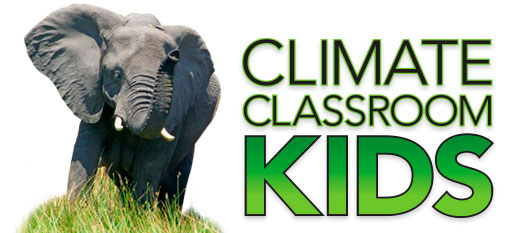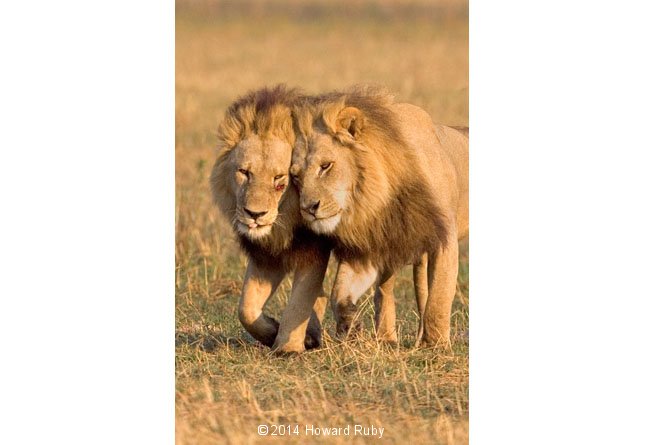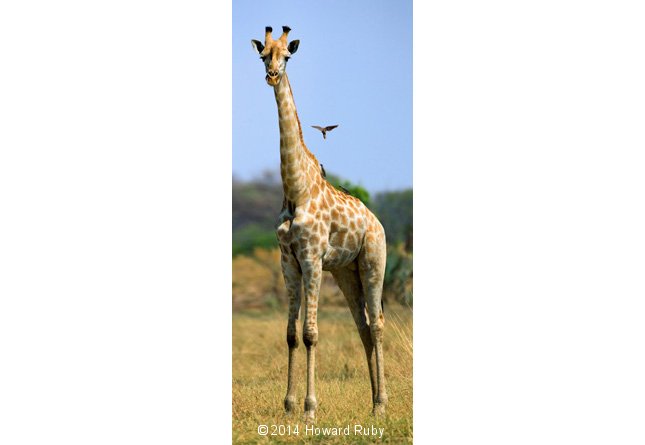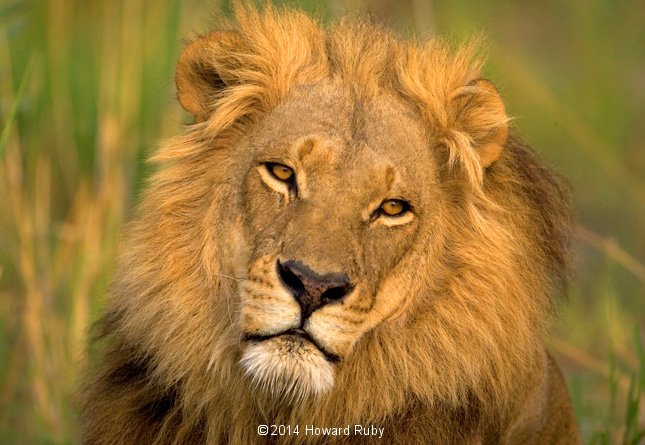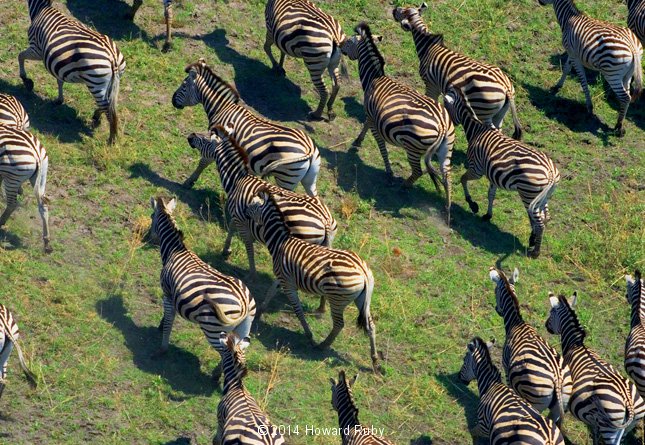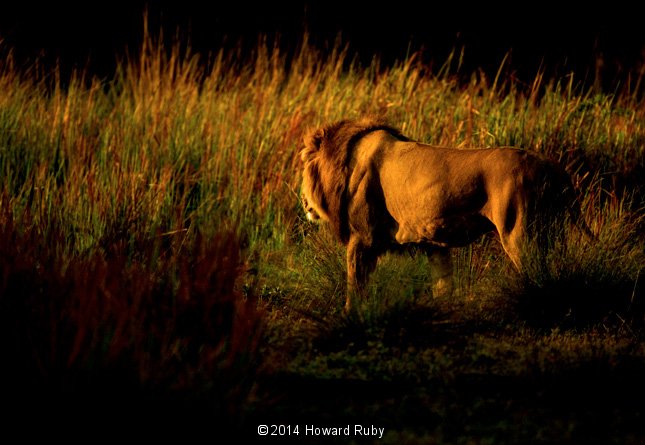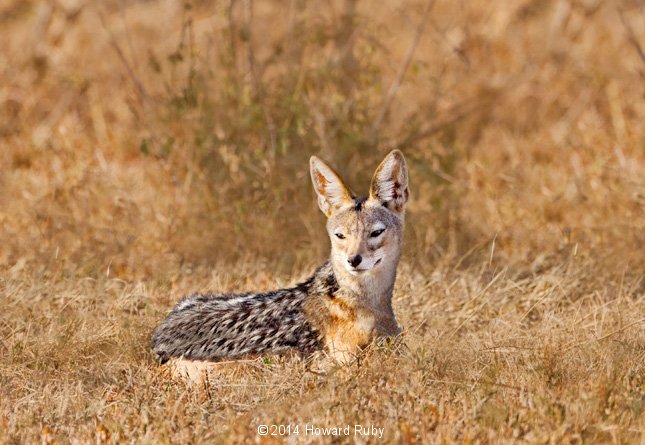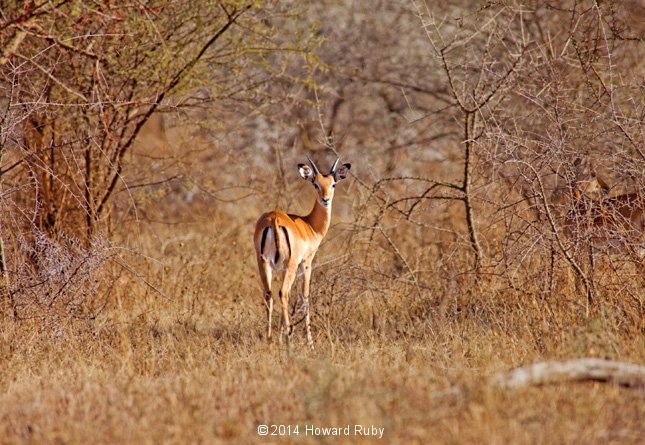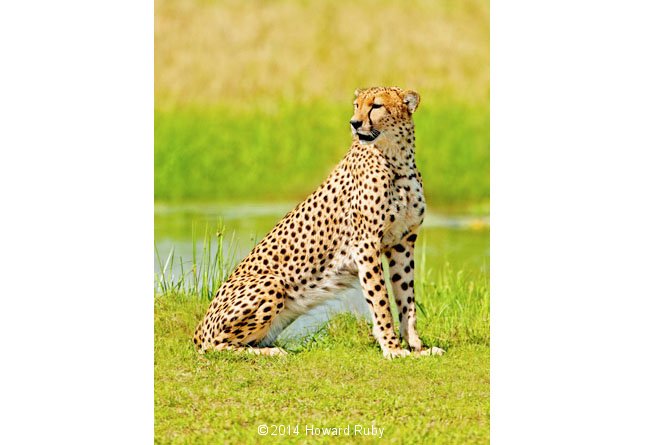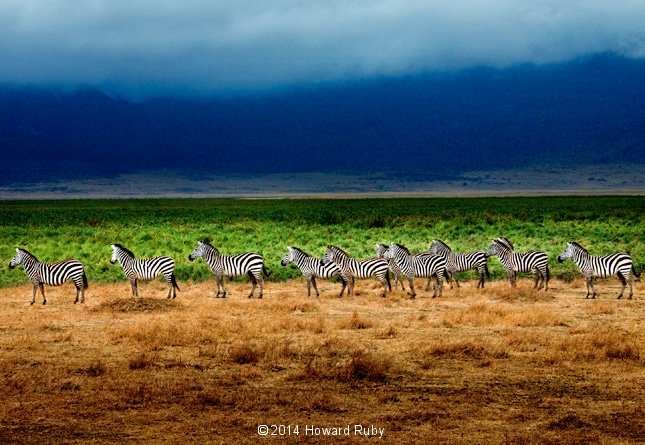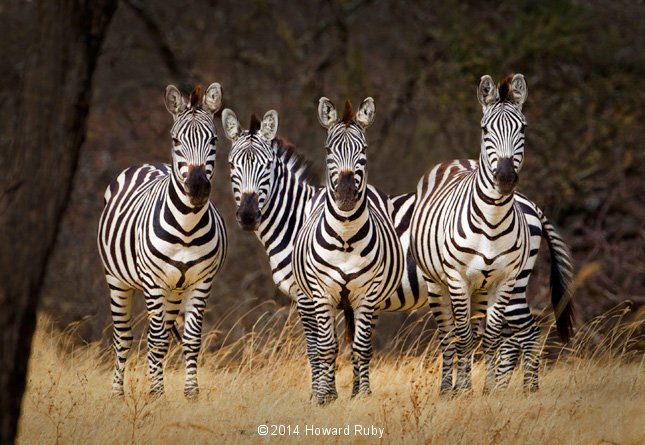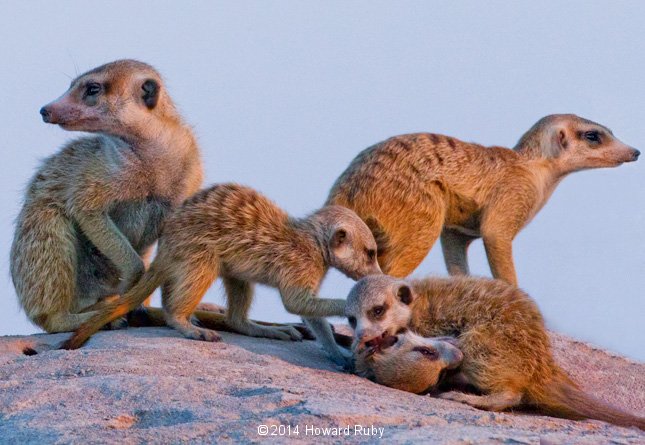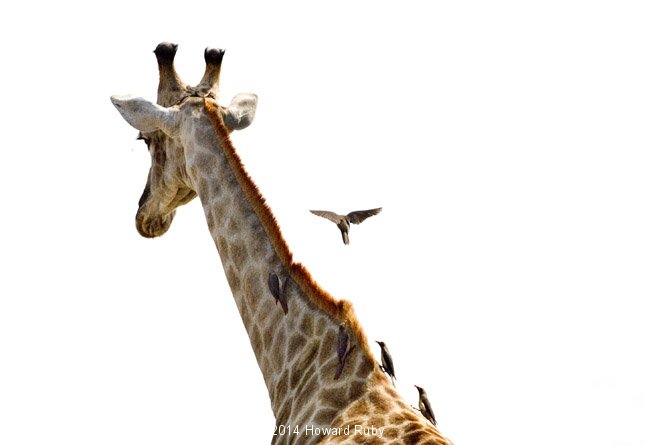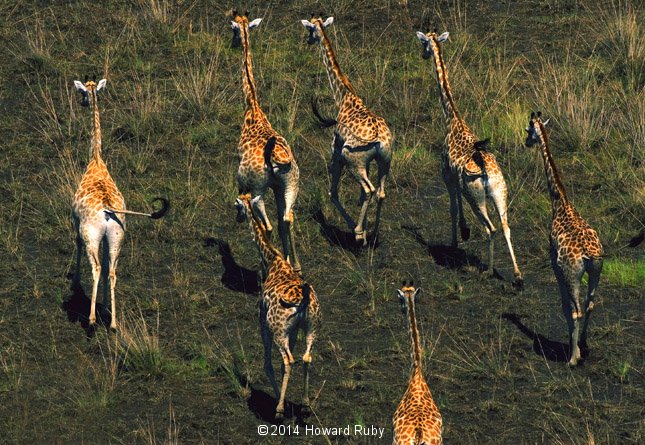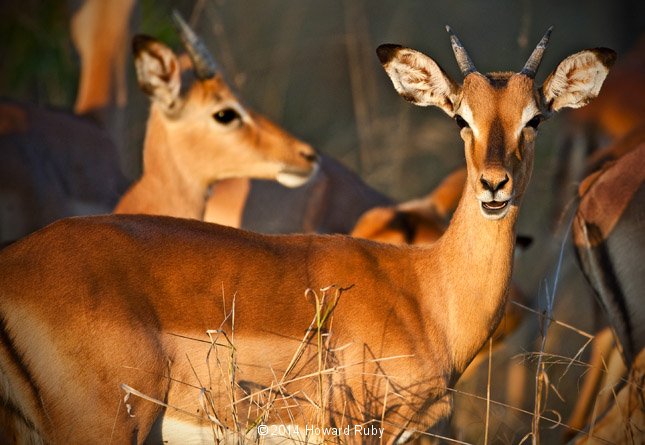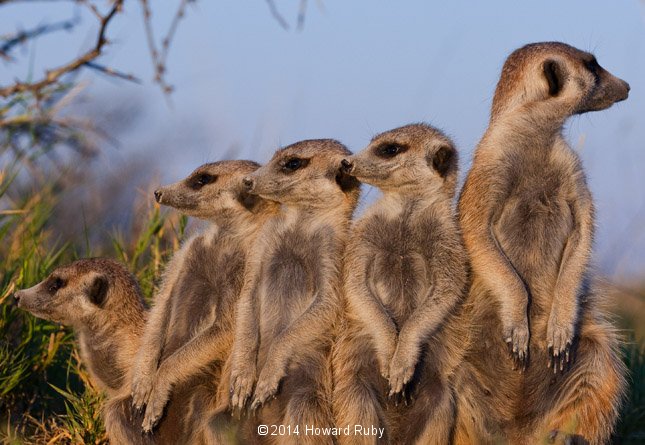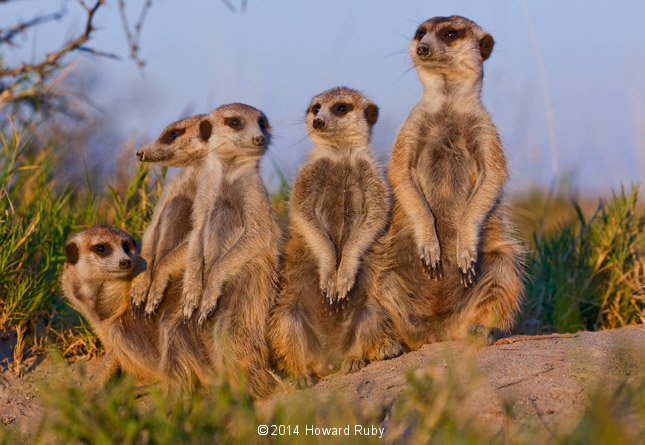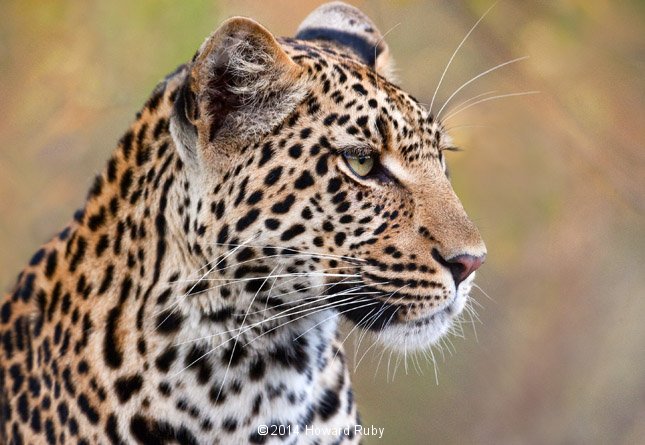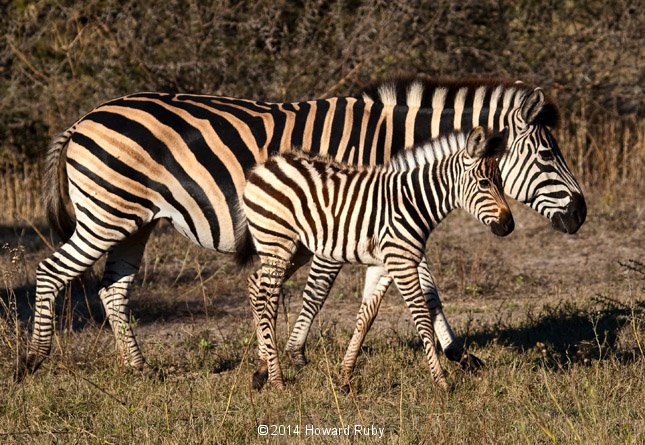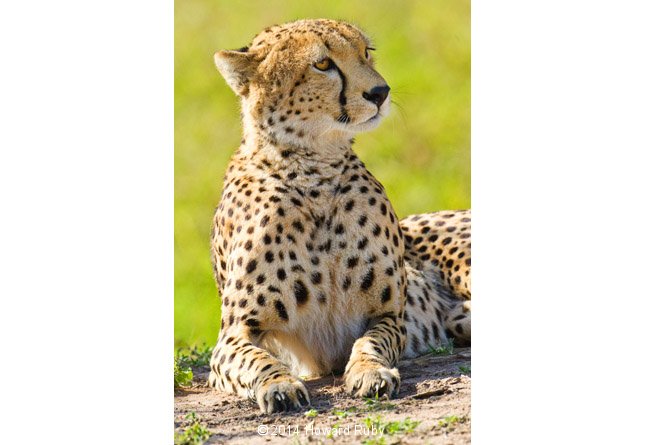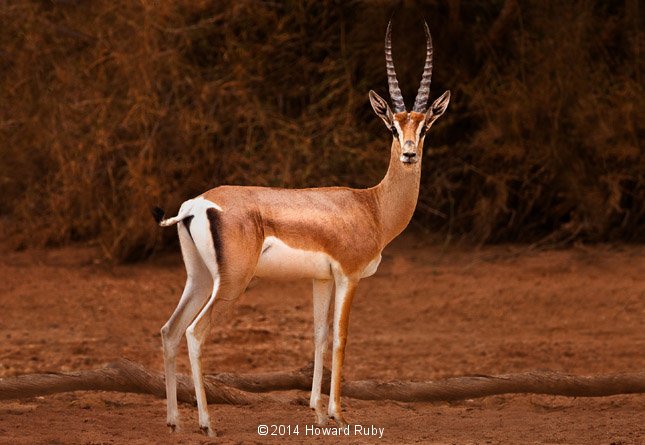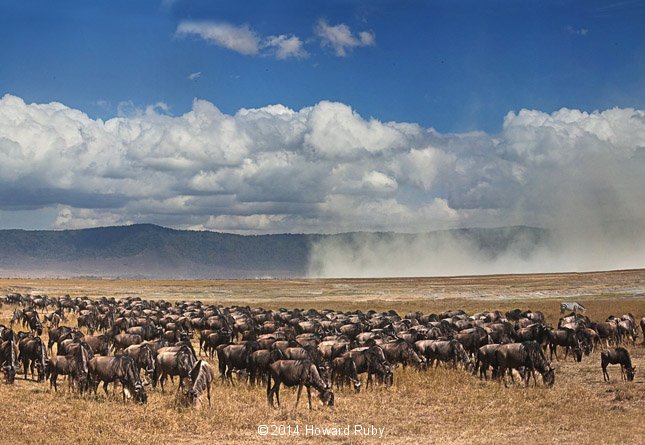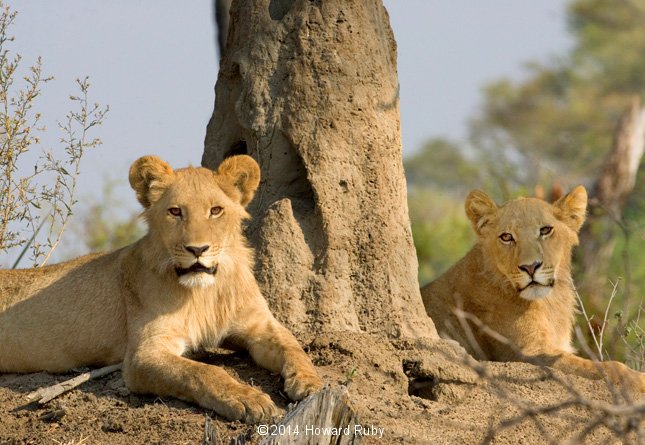Lions, Leopards & More
The photos in this gallery were all taken at the Okavango (oh-ka-vahn-go) Delta in Botswana. The Okavango Delta is a unique ecosystem of floodplains, water-lily lagoons, forest glades and savannah grasslands. Animals such as lions, leopards, zebras, giraffes and many other animals and plants are all an important part of this ecosystem. As you read fun facts about the animals below think about how they “fit together” in this amazing place. How could climate change affect they way live together?
Lions
Lions are the only truly sociable cats. A group of lions, or a pride, includes from 2 or 3 to 40 lions. A pride usually has just two or three adult males. Pride members perform a greeting ritual upon meeting; they rub their heads and sides together, with tails looped high, while making friendly moaning sounds.
Lions eat everything from tortoises to giraffes, but tend to hunt the prey they grew up eating. Food choices differ among prides.
A male lion develops a mane beginning in third year; manes vary individually from blond to black. Lions are 5-8 feet long. Their tails are 24-40 inches long. Lions can weigh from 268-572 pounds.
Giraffes
Giraffes are the tallest animals in the world, unmistakable for their very long legs and neck. They can be up to 19 feet tall and weigh 1,540-3,070 pounds. Their necks can be 8 feet long and their tongues can be 18 inches long!
Giraffe females and young live in maternal herds. Males separate from their mothers in their third year to join bachelor herds, gradually becoming solitary with maturity.
Giraffes use their necks to tell each other how they feel. When a giraffe is angry, it will lower its neck until it’s almost level with the ground.
Giraffes browse on leaves and can reach branches 19 feet from the ground. During rainy seasons, giraffes range widely, eating where ever they find food; in the dry season, they concentrate on evergreen trees growing along watercourses. They drink every few days when water is available and get much of the water they need by eating juicy leaves.
Scientists recently discovered that giraffes can make sounds that people cannot hear. But we can hear some giraffe sounds like moo, roar, snort and grunt.
Zebras
There are three kinds of zebras in Africa, the common Plains Zebra and the rarer Grevey’s and Mountain Zebras. Within these species are several variations that have different colors and patterns of stripes. No two zebras have exactly the same pattern of stripes! Zebras can be 7-9 feet long, 4-5 ½ feet tall, and weigh 485-990 pounds.
When a herd of zebras runs away from a predator, the swirl of stripes makes it hard to pick out an individual from the crowd. This can sometimes give the zebras just enough time to escape!
Zebras spend most of their time grazing on grasses. They travel in herds. A family herd consists of mothers and young and a head stallion. Young males travel in their own “bachelor” herds until they are able to gather together a family herd of their own.
Meerkats
One of the most engaging of all the African animals, this small mongoose scratches a living in a harsh land, mainly by unearthing insects and the like. Meerkats are about 11 inches long, with an additional 7-9 inch tail, and weigh 2 pounds or less.
Packs number from 5 to 30 animals. Because the danger from birds of prey, jackals, and other larger predators is ever-present, certain members take turns performing guard duty, standing on their hind legs atop a mound or bush. All pack members help rear the young. This animal is also called the Suricate.
